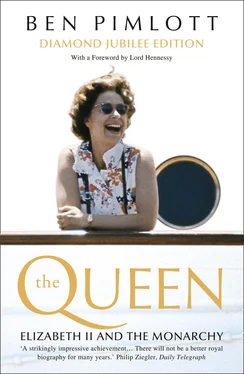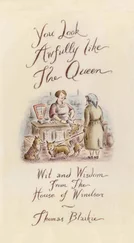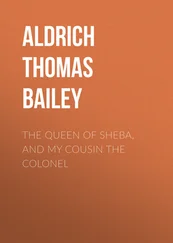It was also, of course, a female artefact, a point made by Lisa Sheridan, when the children proudly took her on a tour in 1936:
In the delightful panelled living-room everything was in its proper place. Not a speck of dust anywhere! Brass and silver shone brilliantly. Everything which could be folded was neatly put away. The household brushes and the pots and pans all hung in their places. Surely this inspired toy provided an ideal domestic training for children in an enchanted world . . . Everything in the elegantly furnished house had been reduced, as if by magic, to those enchanting proportions so endearing to the heart of a woman. How much more so to those young princesses whose status fitted so perfectly the surroundings? 5
Y Bwthyn Bach gave Elizabeth a Welsh dimension. A Scottish one was provided shortly afterwards by the appointment, early in 1933, of a governess from north of the border, Marion Crawford. In a sense, of course, Elizabeth was already half-Scottish, and it was the Scottish networks of the Duchess of York that had led to the appointment. However Miss Crawford belonged to a different kind of Scotland from the one known to the Bowes-Lyons, or – for that matter – to the kilt-wearing Windsor dynasty. A twenty-two-year-old recent graduate of the Moray House Training College in Edinburgh, she came from a formidable stratum: the presbyterian lower middle class.
Miss Crawford stayed with the Yorks, later the Royal Family, teaching, guiding and providing companionship to both girls for fourteen years, until she married in 1947, shortly before the wedding of Princess Elizabeth. Three years later, she published a detailed account of her experiences in the royal service, against the express wishes of the Palace. ‘She snaked,’ is how a member of the Royal Family describes her behaviour today. 6Perhaps it was the incongruity of a woman from such a background betraying, for financial gain, the trust that had been placed in her (as her employers came to see it) which accounted for the anger that was felt. She was not the last to snake, but she was the pioneer. Marion Crawford was soon known as ‘Crawfie’ to the princesses: ‘doing a Crawfie’ became an expression for selling family secrets, especially royal ones, acquired during a period of personal service. To the modern reader, however, Miss Crawford’s Little Princesses is a singularly inoffensive work. Composed with the help of a ghost writer in a gushing Enid Blyton, or possibly Beverley Nichols, style, it does not destroy the Never-Never-Land mythology of 145 Piccadilly, but embraces it. Love, duty and sacrifice are the currency of daily life, and everybody always acts from the best of motives. Yet the book also has perceptiveness – and the ring of authenticity. Although effusively loyal in tone, it reveals a sharp and sometimes critical eye, and opinions which were not always official ones.
It shows a character with just enough of a rebellious edge to make the subsequent ‘betrayal’ explicable. Until she became notorious, Crawfie and her presence at the Yorks’ hearth were regarded in the press (perhaps rightly) as evidence of the Bowes-Lyon belief in no-nonsense training for young girls. According to The Times on the occasion of Princess Elizabeth’s eighteenth birthday, Miss Crawford ‘upheld through the years of tutelage the standards of simple living and honest thinking that Scotland peculiarly respects’. 7When the Duke of York became King, she was also felt to provide a politically useful bond between the kingdoms. The most important point about Crawfie, however, which escaped public attention at the time, was that she had aspirations, both for her charges and for herself.
She was no scholar, and seemed to share the Royal Family’s indifference to academic and aesthetic values. Yet she did not share its lack of curiosity, and she had a strong, indignant sense of the Court as old-fashioned and remote. She deplored what she saw as the children’s ignorance of the world, and her book – perhaps this was the most infuriating thing about it – describes her personal crusade to widen the little girls’ horizons. There was a Jean Brodie, charismatic aspect to Miss Crawford, both in the power of her passionate yet selfishly demanding personality (sometimes she seemed to forget who was the princess) and in her evangelical determination to make contact with life outside. Although for part of the time she had Queen Mary as an ally, it was an uphill struggle. She did, however, take the children on educational trips, and conspired to satisfy their desire to travel on the London tube; and her greatest triumph was to persuade her employers, by then King and Queen, to allow a Girl Guide Company to be set up at Buckingham Palace. She was also a woman of her age: her other ambition was to get married, something which was incompatible with her employment and – if her own account is to be believed – one which her employers could never understand.
Crawfie was not a contented person. Indeed, the self-portrait unwittingly contained in her book suggests a rather lonely and restless one, an immigrant to England and an outsider to a strange tribe whose members, though friendly, persisted in their unusual and disturbing customs. She was a taker as much as a giver. But she was interesting, intelligent and forceful. Patricia (now Lady) Mountbatten – daughter of Louis and Edwina, and a second cousin of the princesses – remembers her from Guide meetings in the Buckingham Palace gardens as a tall, attractive, highly competent woman, ‘with a good personality for bringing out somebody like Princess Elizabeth, who had a stiff upper lip ingrained from birth.’ 8There seems to have developed a mutual dependence, as she became, during critical years, the princesses’ confidante and friend.
PRINCESS ELIZABETH’S earliest years had been spent at 145 Piccadilly with her parents, at Glamis Castle and St. Paul’s Walden Bury with one set of grandparents, or at Balmoral and Sandringham with the other. In 1931, the Yorks were granted Royal Lodge, in Windsor Great Park, by the King, and in the following year they took it over as their private country residence. Thereafter, the adapted remnant of George IV’s cottage orné designed by John Nash, with its large, circular garden, screening of trees, and air of rustic simplicity, became one of Princess Elizabeth’s most familiar homes. More than anywhere, Royal Lodge provided the setting for the Yorks’ domestic idyll. Summers were spent there with a minimum of staff.
From the point of view of family life, it was an advantage (not mentioned in the newspaper profiles) that the Duke had little to do. He went on the occasional overseas visit, though never again, as Duke of York, on the scale of the 1927 Australian tour; he exchanged hospitality with relatives and friends; he gardened, he rode, and he shot. With time on his hands, he was often at home during the day and able to take luncheon with his family, and to play tag or hide-and-seek with his daughters in Hamilton Gardens. Until 1936 he and his wife seemed perfectly content with the undemanding routines of a minor member of the Royal Family, of whom little was required or expected. The Duchess had been a society beauty, fêted and wooed in her youth. After contracting a surprising if elevated marriage, however, she appeared to have no ambitions beyond the settled rhythms of an unremarkable aristocratic life, and the enjoyment of her children. Though her wit and charm made her friends wherever she went, and endeared her to other members of the Royal Family, she and her husband were not a fashionable couple, and they had little contact with the café society which held such a fascination for the Prince of Wales.
Crawfie, who disapproved of some of the grander and crustier aspects of the royal way of life, repeatedly stressed in her book that the York establishment concentrated on the children. ‘It was a home-like and unpretentious household I found myself in,’ she wrote. Life at 145 Piccadilly, at least as seen from the perspective of the governess, revolved around the nursery landing, or around the sleeping quarters of the Duke and Duchess. ‘No matter how busy the day, how early the start that had to be made,’ according to Crawfie, ‘each morning began with high jinks in their parents’ bedroom.’ This was a daily ritual which continued up to the morning of Princess Elizabeth’s marriage. The day ended with a bath and a bedtime ritual, also involving parental high jinks. ‘Nothing was ever allowed to stand in the way of these family sessions.’ 9
Читать дальше












